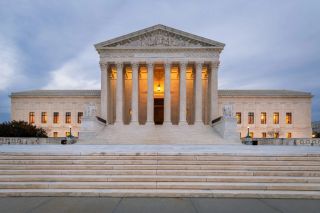Race and Ethnicity
Supreme Court Rulings Are Inconsistent on Racial Justice
Race consciousness is allowed to determine access to voting but not education.
Posted December 1, 2023 Reviewed by Ray Parker
Key points
- The U.S. Supreme Court ruled that race consciousness is essential in deciding cases related to voting rights.
- However, it ruled that race consciousness is not essential for access to higher education.
- Forbidding considerations of race ignores the systemic disadvantages that marginalized groups experience.
- Psychological evidence supports calls for race-conscious policy.

By Melissa Anderson, M.S. and Cynthia Najdowski, Ph.D.
The U.S. Supreme Court’s early June ruling in Allen v. Milligan recognized that race consciousness can be necessary for justice. In Allen, the court affirmed that drawing congressional district lines without consideration for racial demographics can violate the Voting Rights Act.
Alabama’s plan to pack Black citizens into districts where their votes would be outweighed by White citizens who typically prefer different candidates would have denied Black citizens equal opportunity to participate in the political process. That type of racial gerrymandering disenfranchises Black citizens and negatively impacts their mental health and well-being. The court’s decision, which effectively required Alabama to achieve electoral fairness by accounting for race when redrawing district lines, represented a step forward for racial justice.
However, the court’s decision just three weeks later in Students for Fair Admissions, Inc. v. President and Fellows of Harvard College marked a sharp turn to color-blind policy. The court, overruling lower district and appeals courts, found it unconstitutional to offset disadvantages experienced by historically marginalized groups by considering race in college admissions.
According to the majority’s logic, race-based admissions procedures illegitimately stereotype Black and Hispanic students as having faced barriers to higher education while simultaneously discriminating against other students not presumed to have been similarly disadvantaged. In prohibiting race-conscious policy, the court denied the need to correct for structural racism and ignored the importance of increasing diversity on college campuses, which improves the well-being and academic success of students of color and reduces prejudice, enhances empathy, and improves critical-thinking skills among all students, as argued by American Psychological Association (APA) and other organizations in an amicus brief.
The court’s contradicting positions in Allen and Students for Fair Admissions contribute to uncertainty regarding the role race may legally play in various circumstances. Still, psychologists can promote racial equity by informing the public, policymakers, and courts about psychological factors that may shape views on the matter. Endorsement of race-conscious versus color-blind perspectives may reflect broader beliefs about racism.
For example, studies have shown that in contrast to people who belong to non-White groups and politically liberal people, White people and politically conservative people are less likely to understand the structural nature of racism and more likely to view racial justice as a zero-sum game. In other words, those populations are less likely to appreciate how laws create racial disparities, and they inaccurately believe that reducing bias against Black people inevitably increases bias against White people.
The research provides valuable insight into psychological processes that underlie arguments against race consciousness, which commonly deny ongoing structural racism and assert that race neutrality is needed to avoid unfairly disadvantaging White people. Intervening to correct the zero-sum fallacy and explain how racism can be embedded in institutions may enhance appreciation for race-conscious policies.
The Supreme Court has the power to advance racial equity in the United States, as it did in Allen by preventing racial gerrymandering and protecting Black voters’ rights. However, it can also perpetuate structural racism, as it did in Students for Fair Admissions, by prohibiting affirmative action practices that enhance inclusivity on college campuses.
We hope psychologists and social scientists will advocate for race-conscious, rather than color-blind, policy by presenting scientific evidence of structural racism, its effects, and how extending the promise of democracy to those who have been marginalized benefits everyone. Such advocacy should be useful for countering invalid legal arguments and may even help correct some justices’ misunderstandings about racism.
Edited by Ashley M. Votruba, J.D., Ph.D., SPSSI Blog Editor, Assistant Professor, University of Nebraska-Lincoln
Melissa Anderson, M.S. is a Research Assistant at the Research Foundation for SUNY, and Cynthia Najdowski, Ph.D. is an Associate Professor, Area Head Department of Psychology University at Albany




